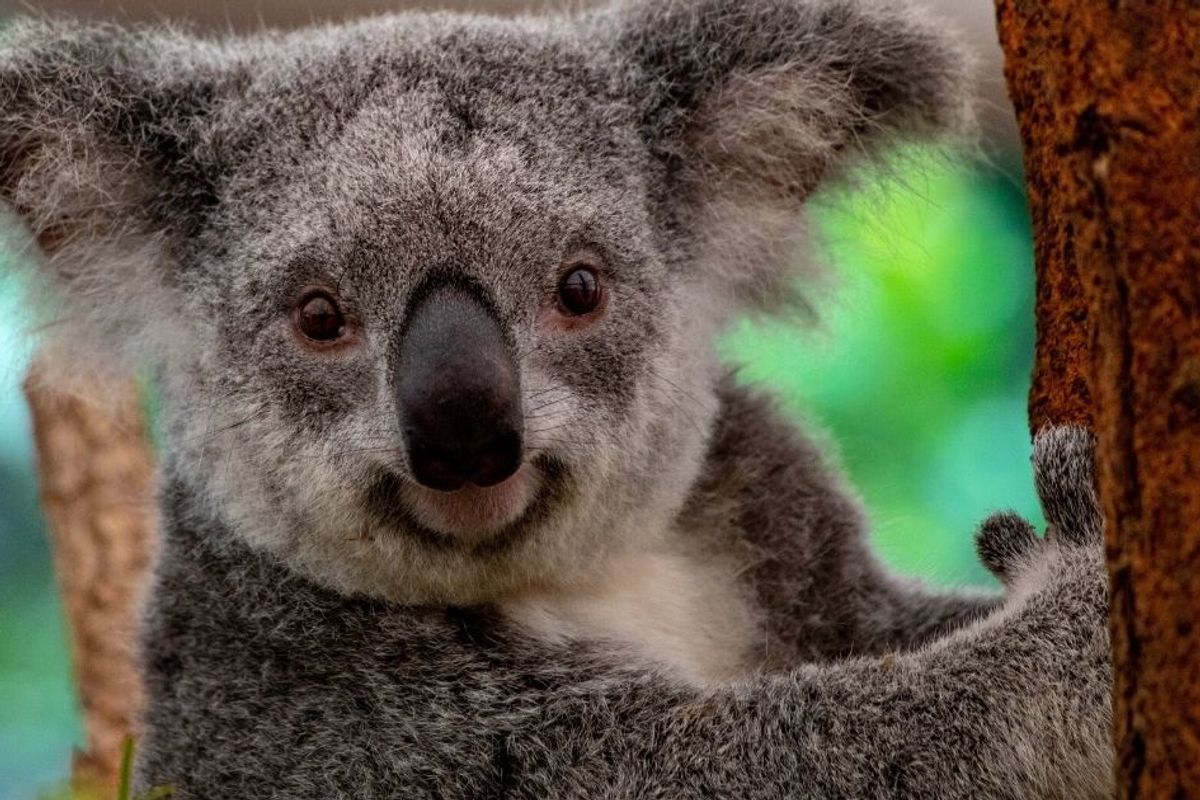
A viral Forbes article claiming that koalas have become "functionally extinct" and that 80% of their habitat has been destroyed by Australia's devastating bushfires made its way around social media this weekend.
The problem is, it's not totally true.
Several ecology experts have responded to the article, pointing out that the koala situation in Australia is not that straightforward. The primary source for the "functionally extinct" claim in the Forbes article was the Australia Koala Foundation (AKF), an organization that advocates for the protection and conservation of koalas and their habitats. The functionally extinct designation generally means that an animal's population has dwindled to the point where they no longer play a significant role in their ecosystem and the population is no longer viable. AKF first announced that koalas may be functionally extinct back in May, but koala researchers and scientists say that its inaccurate to paint the koala population with that broad of a brush.
RELATED: When some koalas needed friends, these farmers stepped up.
"I do not believe koalas are functionally extinct—yet," Rebecca Johnson, a koala geneticist at the Australian Museum, told CNET. "That said, the fires are likely to have had a huge impact on what we know are some extremely valuable populations who are important for the long term survival of the species."
Dr. Christine Adams-Hosking, a koala expert at the University of Queensland, told Australia's SBS News, "In ecology it's always grey—there's never black and white, because koalas are very hard to track and count. But to say they're functionally extinct all over Australia, you can't possibly say that, because in some places they're doing well—in some places they're over-abundant."
The numbers offered by the AKF in the Forbes article are not definitively backed up by science. Adams-Hosking told SBS that recent expert estimates suggest that there are between 120,000 and 300,000 koalas in Australia—significantly more than the 80,000 count provided by AKF. It's not clear where AKF got the statistic that 80% of koala habitat has been destroyed, though the bushfires certainly are reeking havoc on the species, and that may be true in some specific areas. Hundreds of koalas have been killed in the fires, with heartbreaking and dramatic rescue stories making the news.
Adams-Hosking is clear about the dangers facing the cuddly creatures, but she's also clear about the importance of using scientific methods to gather data and make the most accurate statements about their status. The problem is, in an era of 24/7 breaking news headlines, actual science is comparably slow—and remarkably unsexy. When you add politics into the mix, not-totally-accurate stories sourced from not-total-experts can easily overpower the more measured voice of scientific research.
As Adams-Hosking pointed out to New Scientist, AKF's claims were made on the eve of elections in Australia. The environment and climate change are big issues, and AKF is an advocacy group that has been pushing politicians to take action. Hyperbole is a hallmark of politics, but is anathema to science. When the two overlap in reporting, this is what we get.
"There's a lot of politics going on, and somehow the koala gets involved," said Adams-Hosking.
So are koalas okay or not? The problem with stories like the Forbes article is that they cause people who are concerned about the environment to react strongly and share with passion. Then articles like those referenced above come out, causing people who think environmental concerns are overblown to say, "See? They're wrong! It's debunked! It's fake news!" But reality is always more complex than simple headlines or single stories, and the truth often lies somewhere between polarized extremes.
RELATED: Australia wanted tourists to forget climate change is a thing. It backfired.
The overall outlook is that koala populations vary throughout Australia—they are in danger of extinction in some areas, while overpopulating others. But deforestation due to farming and urbanization is an ongoing threat to koalas, who rely on eucalyptus trees for food. The recent bushfires in Australia haven't helped. Without protection they will continue to lose habitat and populations will remain threatened.
I think it's really important to be careful about the kind of language we use causing hopelessness. Let not give up on koalas!!! Conversation works we we actually do conservation!
— Erin Biba (@erinbiba) November 24, 2019
Climate change has also begun playing a role in koala population decline, as extreme weather accelerates and heatwaves become more common in Australia. Koalas can handle some heat, but they can't survive in sustained high temperatures. In urban areas, koalas also face dangers from people's pet dogs and from drivers hitting them with cars. But the biggest threat remains land loss from deforestation and habitat loss.
"They just can't live without forest, it's that simple," Adams-Hosking said. "Unless you get serious about protecting their habitat, nothing will change."
So yes, even though koalas aren't all going extinct, they are in trouble. Let's work on protecting them and all other species that are threatened by human activity. At the same time, let's make sure we turn to scientists for science and advocacy groups for advocacy. We need both, but we have to be careful about who we get statistics from and who we rely on for facts when we're sharing stories.

